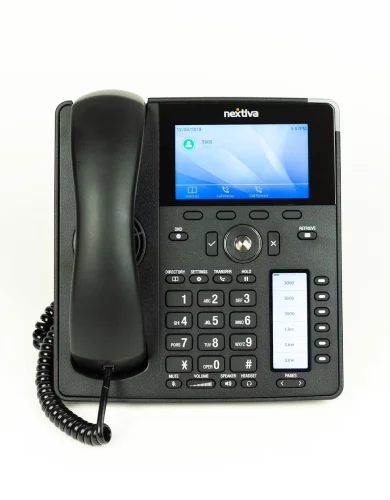What is SoGEA broadband?
SoGEA is the technology behind “Part Fibre” or “Standard Fibre” connections currently offered by broadband providers in the UK. It delivers fast broadband services without the need for a traditional phone line.
Given the relatively new use of this term in broadband services, it’s understandable that SoGEA might cause some confusion.
This guide explains what SoGEA means, what its purpose is, and which providers offer it.
💡 Key takeaways:
- SoGEA is FTTC broadband without the burdens of a landline: It’s cheaper, simpler and more secure.
- SoGEA lets providers continue to offer part-fibre connections, unaffected by the big switch-off in 2027.
- SoGEA is typical in smaller businesses in rural areas and is a slower alternative to full fibre business broadband.
What is SoGEA?
SoGEA is a part fibre broadband service offered through the Openreach network, providing internet connectivity without a traditional phone line.
SoGEA represents the latest iteration of FTTC (“Fibre to the Cabinet”) broadband, which uses fibre optic broadband to a local street cabinet and then a copper cable to connect individual properties.
Broadband providers typically market SoGEA as “Standard Fibre” or “Part Fibre” because of its mixed-use of both fibre and copper connections.
The key difference lies in the broadband router. A SoGEA router is solely designed to handle internet traffic and does not include a port for a phone or a microfilter to split voice and data signals. In contrast, earlier FTTC routers were equipped to support both.
Why was SoGEA introduced?
Business broadband providers have been offering SoGEA since 2019, as it became clear that traditional landlines would be phased out during the big switch-off in 2027.
At this date, Openreach will no longer support traditional telephony on copper wires; instead, it will only support broadband internet traffic on this infrastructure.
While FTTC can technically offer broadband without a landline, SoGEA is fully optimised to provide landline-less broadband, presenting a better solution.
This is especially important since millions of homes and businesses (especially in rural and remote locations) still rely on copper wires for broadband.
Key features and benefits of SoGEA broadband
The table below outlines SoGEA’s key features, highlighting its main differences from earlier iterations of FTTC broadband.
| SoGEA Feature | Description | SoGEA vs FTTC |
|---|---|---|
| Infrastructure | Uses existing copper lines for the final leg from the street cabinet to the premises. | Both use the same network infrastructure. |
| No landline | Offers broadband only; does not require a traditional landline. | FTTC includes a phone line service. |
| Simple installation | It is a simple installation process as it relies on the copper phone cables already installed at most properties. | Both have the same installation process. |
| Low costs | SoGEA technology offers low domestic and business broadband prices as it does not require landline installation or line rental. | FTTC is typically more expensive due to the traditional phone line component. |
| More reliable | Higher reliability with fewer potential points of failure, since it's a single service. | FTTC is slightly less reliable as it must focus on both broadband and phone services. |
| Speeds | A SoGEA broadband connection offers domestic and business broadband speeds of up to 80Mbps, depending on the distance to the nearest street cabinet. | Both offer similar speeds. |
| Service availability | Available in areas where fibre-to-the-cabinet (FTTC) broadband is offered by Openreach. | Older FTTC broadband services are no longer actively marketed by domestic or business broadband providers. |
| VoIP Telephony | SoGEA can continue to support voice telephony by using a VoIP phone system to provide a domestic or business phone line. | FTTC supports both traditional phone lines and VoIP. |
How does a SoGEA connection work?
Here’s how the internet “travels” from your provider’s servers to your premises using a SoGEA connection:
- Provider’s Servers: The internet connection starts at your business broadband provider’s servers, which manage data and routing onto the world wide web.
- Local Exchange: Data travels through fibre optic cables to the local exchange, a central hub that connects multiple properties to the internet.
- Street Cabinet: Data is routed from the local exchange to a street cabinet near your premises via fibre optic cables.
- Copper Cables: The internet connection is carried from the street cabinet to your premises over existing copper telephone lines. Unlike FTTC, no telephony signals are transmitted.
- Modem/Router: A modem/router at your premises connects to the incoming copper line, translating the signal into a usable internet connection. The router does not have a phone port and cannot split broadband and voice signals.
- Devices: The modem/router distributes the internet connection to your devices through wired Ethernet or Wi-Fi.
How is SoGEA installed?
Installing SoGEA broadband at a business or home is straightforward and typically does not require an engineer’s visit.
When you order a SoGEA package, your provider will conduct a line check to confirm whether your existing copper connection is compatible with SoGEA.
If the connection is suitable, your provider will send you a new domestic or business broadband router to self-install once the connection goes live.
For more details, refer to our guide on business broadband installations.
Who is SoGEA for?
SoGEA broadband can benefit homeowners as well as businesses of all sizes and industries.
As the modern equivalent of FTTC, it is often considered ideal for small business broadband customers without a critical need for a high-performance connection. Examples include retail stores, cafes and restaurants, small offices and remote farms.
However, SoGEA has also proven to be a cost-effective broadband redundancy solution for larger businesses.
Leased line failover software can switch to SoGEA as a backup, prioritising business-critical traffic if there is an issue with the primary leased line broadband connection.
Which providers offer a SoGEA solution?
Here’s a list of the biggest UK business broadband providers offering SoGEA broadband:
| Provider | Description |
|---|---|
| BT Business Broadband | One of the first to offer SoGEA, providing reliable and widespread coverage. |
| TalkTalk Business Broadband | Offers competitive SoGEA packages tailored for business needs. |
| Sky Business Broadband | Provides SoGEA services with a focus on robust customer support. |
| Vodafone Business Broadband | Offers SoGEA with flexible plans and strong network performance. |
| Zen Internet | Known for excellent customer service and high-quality SoGEA broadband options. |
| Gamma | Specialises in unified communications and SoGEA broadband for businesses. |
| Daisy Communications | Provides a range of telecom services, including SoGEA broadband. |
Note: Local or niche fibre optic business broadband providers offering SoGEA may not be listed here.
SoGEA broadband – FAQs
Our business broadband experts answer commonly asked questions on SoGEA in the UK:
Is SoGEA the same as full fibre broadband?
No, SoGEA is not the same as full fibre broadband.
SoGEA utilises the existing fibre-to-the-cabinet (FTTC) infrastructure, with fibre optic cables running to the street cabinet and copper cables connecting the cabinet to the premises.
In contrast, full fibre broadband uses fibre optic cables directly to the premises (“fibre-to-the-premises” or “FTTP”), offering faster speeds and greater reliability.
Do you need a SoGEA adapter?
No, a specific SoGEA adapter is not needed. All your business will need is a compatible modem/router provided by your business broadband provider, which is configured to work with SoGEA.
Do I need a new router to install SoGEA?
Yes, in most cases, your broadband provider will supply a new modem/router specifically configured for SoGEA.
Even if your existing FTTC router is compatible, it is recommended to use the provided one to ensure compliance with the latest business broadband cybersecurity features.
Using older devices could pose a security risk and leave you vulnerable to emerging cybersecurity threats.
What does SoGEA stand for?
SoGEA is an acronym for Single Order Generic Ethernet Access, with the full name explaining how the technology functions:
- Single Order: Previously, FTTC services required ordering a phone line alongside broadband. “Single Order” signifies that SoGEA provides only broadband without a phone line.
- Generic Ethernet Access: A technical term for delivering internet access using existing fibre and copper infrastructure.
How do I get SoGEA for my business?
Most commercial properties in the UK already have a copper connection suitable for SoGEA broadband.
To secure a SoGEA broadband deal, use our business broadband comparison service today to find the best SoGEA providers in your area.
A SoGEA connection can be activated through a straightforward business broadband switch facilitated by our experts.

